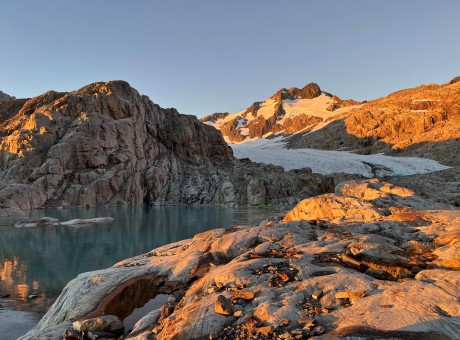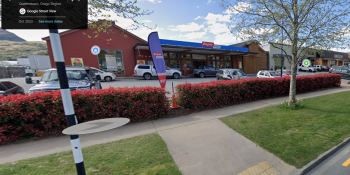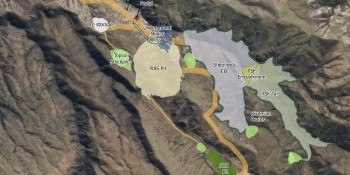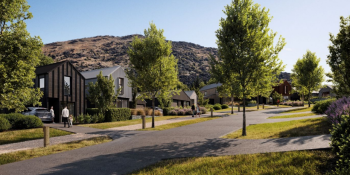National state of emergency as Cyclone Gabrielle unleashes fury
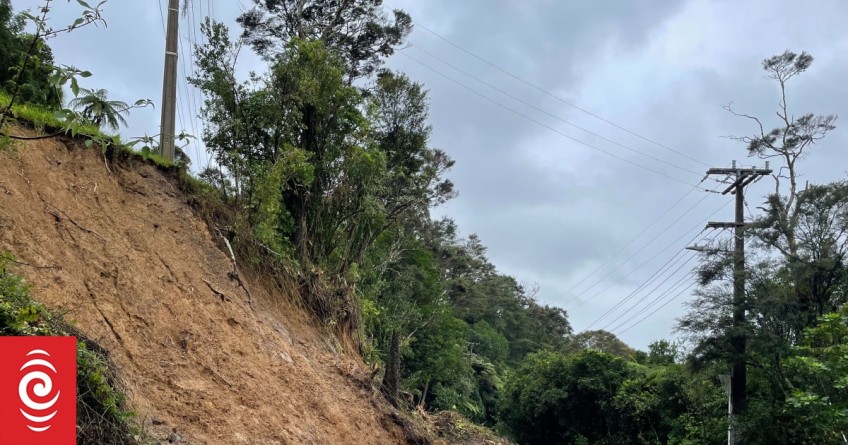
A national state of emergency has been declared after Cyclone Gabrielle unleashed fury across the North Island.
There has been widespread power outages, flooding, slips and damage to properties.
Emergency Management Minister Kieran McAnulty says both the prime minister, and the Opposition spokesperson for emergency management are supportive of the move.
He says this is an unprecedented weather event impacting much of the North Island.
The declaration, signed at 8.43am, applies to Northland, Auckland, Tairāwhiti, Bay of Plenty, Waikato, and Hawke's Bay, and gives the National Emergency Management Agency (NEMA) the power to step in and provide additional support and logistics to local civil defence organisations.
In a statement, McAnulty said local leadership, CDEM groups, and emergency responders in all of the affected areas had been doing an outstanding job, "but the widespread damage caused by this cyclone means we need a National declaration to support them".
"A National State of Emergency gives the National Controller legal authority to apply resources across the country in support of a national level response."
"This declaration gives us the ability to coordination further resources for affected regions. I want to emphasise that the government has already been surging support and resources to the regions for some days."
It is only the third national state of emergency in New Zealand's history, the other two being the Christchurch earthquakes and Covid-19.
Flooding and landslips isolate some Auckland regions
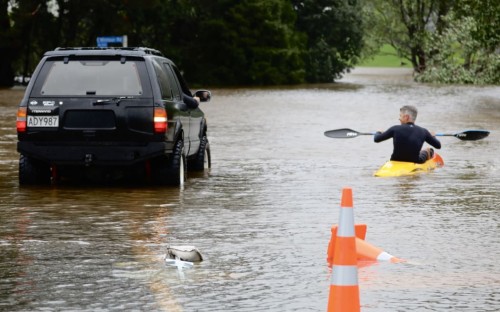
Flooding near Waimauku in the Auckland region (Image: RNZ/Marika Khabazi).
There has been widespread power outages, flooding, slips, and damage to properties after Cyclone Gabrielle lashed the North Island.
Auckland Emergency Management (AEM) duty controller Rachel Kelleher says significant rain overnight over much of the region caused widespread power outages, flooding, slips, and damage to properties.
"The heaviest rain and wind was felt on the west coast of the region. In the 12 hours to 4am, 265mm of rain fell in Piha and 106mm in Muriwai."
Piha, Bethells Beach and Karekare have been left isolated as a result of the flooding and land slips.
In Muriwai, a volunteer firefighter remains trapped inside a collapsed house and another is in a critical condition.
An emergency alert was sent out on Tuesday morning to residents in Muriwai with a heightened level of land slip risk in particular streets.
Kelleher says Defence Force personnel have helped with evacuations and police are set to put a cordon in Muriwai to restrict access.
She says Council building teams will be assessing the situation there today, and will provide advice on whether people can return to their properties.
Kelleher says record river heights have been seen across the region, including Wairoa River Valley near Clevedon which recorded a peak height of 5.55m.
And in Mt Eden, about 33 households were evacuated from an apartment building due to danger posed by a nearby unstable structure.
On power outages, Kelleher says about 15,000 to 20,000 customers are without it in the region.
"High winds are causing falling power lines and a reminder to treat all power lines as live. If you do come across a downed powerline or damaged power equipment, stop, retreat and stay well care, unless you know that power has been isolated, you should stay at least a bus-length away."
She urged people who felt unsafe in their homes to go and stay with friends and family, or to go to one of their shelters or centres.
Auckland Transport says all KiwiRail passenger services continue to be suspended until midday today.
Bus replacements are running on an hourly basis. There will be some delays to some services. Debris on roads has cancelled some too. Ferry services are also limited. They asked people to check AT's website for the most up to date information on road closures.
"Please be mindful of debris, it's extensive out there."
Meanwhile, MetService meteorologist Georgina Griffiths says 250mm of rain was recorded in West Auckland. With the rain band clearing the region, the red heavy rain warning has now expired for the city as well as Great Barrier. There are still some passing showers, but there was expected to be relatively fine weather until Sunday.
But Griffiths says we're not out of the woods yet from the wind, with a red warning for that remaining due to severe south-westerely gales.
National state of emergency: What you need to know
- The New Zealand government has declared a National State of Emergency, to assist in the response to Cyclone Gabrielle.
- The declaration will apply to the six regions that have already declared a local State of Emergency: Northland, Auckland, Tairāwhiti, Bay of Plenty, Waikato, and Hawke's Bay.
- A national state of emergency gives the national controller legal authority to apply further resources across the country and set priorities in support of a national level response.
- Put safety first. Don't take any chances. Act quickly if you see rising water. Floods and flash floods can happen quickly. If you see rising water do not wait for official warnings. Head for higher ground and stay away from floodwater.
- Stay at home if it is safe to do so. But have an evacuation plan in case your home becomes unsafe to stay in.
- If you have evacuated, please stay where you are until you are given the all-clear to go home.
- People should stay up to date with the forecasts from MetService and continue to follow the advice of civil defence and emergency services.
- Do not try to walk, play, swim, or drive in floodwater: even water just 15 centimetres deep can sweep you off your feet, and half a metre of water will carry away most vehicles. Flood water is often contaminated and can make you sick.







